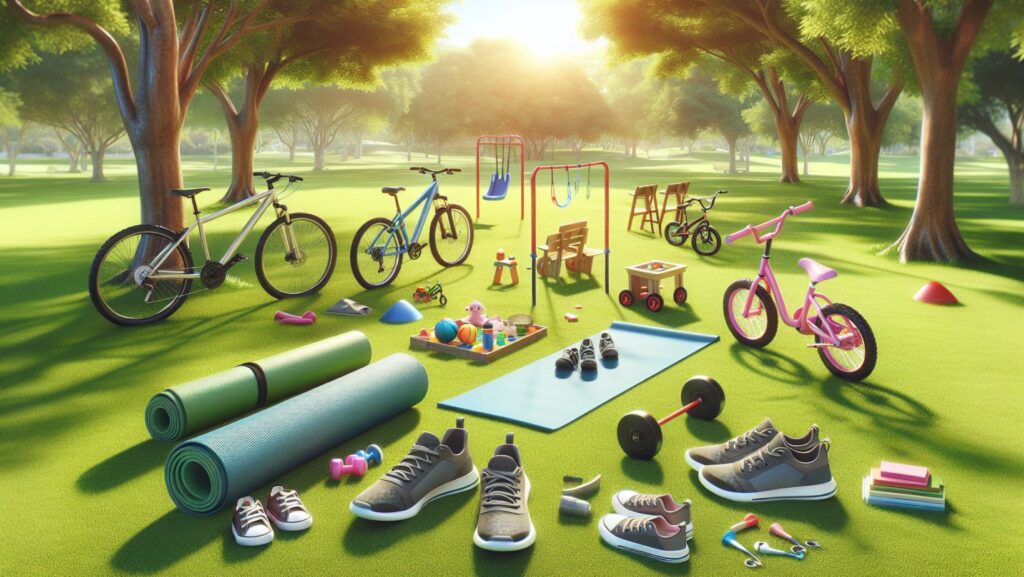
Establishing a balanced fitness routine for both children and parents is essential for maintaining a healthy lifestyle. It can help improve physical health, strengthen family bonds and instill lifelong habits. Understanding the key components of such a routine is crucial for achieving these benefits.
Creating a balanced fitness routine that works for both children and parents involves understanding each other’s needs and finding common ground. By incorporating fun activities, setting realistic goals and ensuring consistency, you can foster an environment that promotes health and well-being for the entire family. This article will guide you through essential tips to achieve a harmonious fitness regimen.
Understanding the Importance of Children’s Fitness
Children’s fitness is not just about keeping kids active but about fostering a love for movement that will last a lifetime. Ensuring that children have access to various Kids Fitness Classes can significantly impact their physical development, mental health and social skills. What’s more, engaging in regular exercise helps combat childhood obesity and promotes overall well-being.
When designing a fitness routine, it is important to incorporate activities that cater to different age groups and abilities. For younger children, playful activities such as running, jumping and playing tag can be both enjoyable and beneficial. As they grow older, introducing structured exercises like fitness classes can provide them with the discipline and skills needed to stay active.
Parents should also consider their own fitness needs when planning activities with their children. Finding workouts that can be done together not only saves time but also creates opportunities for bonding and setting a positive example. By prioritizing fitness within the family schedule, everyone can enjoy the benefits of an active lifestyle.
Finding the Right Children’s Exercise Programs
The success of any fitness routine lies in its ability to keep participants engaged and motivated. For kids exercise programs, this means finding activities that are both fun and challenging. Look for options that offer a variety of exercises to prevent boredom and ensure comprehensive physical development.
Many community centers, schools and gyms offer exercise programs designed for different interests and skill levels. From dance classes to martial arts, there is something available for every child. Encouraging your child to try different activities can help them discover what they enjoy most while developing a range of physical skills.
Parents should also be involved in selecting these programs by attending trial classes or speaking with instructors about their goals and expectations. Additionally, participating alongside your child whenever possible can enhance the experience and demonstrate the importance of maintaining an active lifestyle.
Integrating Family Fitness into Daily Life
Making physical activity a part of your daily routine does not have to be complicated or time-consuming. Simple changes like walking or biking instead of driving, having regular family sports nights, or even doing household chores together can make a significant difference in your family’s overall fitness levels.
Scheduling regular workout sessions as a family ensures consistency and helps build healthy habits over time. Consider setting aside specific days or times each week dedicated to physical activity. This not only reinforces the importance of exercise but also provides an opportunity for quality family time away from screens and other distractions.
Remember that leading by example is crucial when it comes to instilling good habits in your children. Show them that you value fitness by making it a priority in your own life. Your commitment will inspire them to adopt similar practices and understand the long-term benefits of staying active.
Creating a Supportive Environment
When it comes to kids exercise, a supportive environment is key to maintaining motivation and achieving fitness goals. Encourage open communication within your family about each member’s progress, challenges and achievements. Celebrating small victories together can boost morale and reinforce positive behaviors.
It is also important to be mindful of each person’s unique needs and limitations. Avoid comparing one another’s abilities or progress; instead, focus on individual growth and improvement. Providing positive reinforcement helps build confidence and encourages continued participation in fitness activities.













